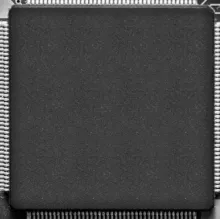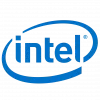
The Intel G33 Express Chipset, part of the Intel 3 Series chipsets, represented a pivotal point in desktop computing around 2007. Designed for compatibility with a range of Intel processors, including Core 2 Duo and Core 2 Quad, it offered a robust platform for mainstream desktop systems. The G33 chipset's integrated graphics, powered by the Intel Graphics Media Accelerator 3100, provided entry-level graphical capabilities, suitable for typical office applications and multimedia playback.
Supporting DDR2 memory technology with a maximum memory size of 8GB, the G33 Express Chipset facilitated responsive multitasking and efficient data access. Its memory controller supported dual-channel configurations, optimizing memory bandwidth for improved system performance.
One notable feature was the inclusion of Intel Clear Video Technology, enhancing the visual experience by providing advanced video decoding capabilities. This contributed to smoother video playback and improved image quality, making it suitable for multimedia consumption.
Connectivity was a strong point of the G33 chipset, with support for PCI Express 1.1, allowing for the integration of discrete graphics cards for users with more demanding graphical needs. Additionally, USB 2.0 support offered high-speed data transfer for peripherals and external devices.
The G33 Express Chipset also featured Intel's Dynamic Video Memory Technology (DVMT), allowing dynamic allocation of system memory for graphics purposes. This flexibility allowed the system to adapt to varying graphical demands, optimizing memory utilization.
While the G33 Express Chipset is now considered outdated due to subsequent technological advancements, it played a crucial role in providing a stable and balanced platform for mid-range desktop systems during its active years. Its feature set and compatibility with a variety of processors contributed to its popularity among users seeking reliable performance for everyday computing tasks. As technology progressed, newer chipsets emerged, offering enhanced capabilities and features, but the G33 remains a part of the evolutionary timeline of desktop computing.


